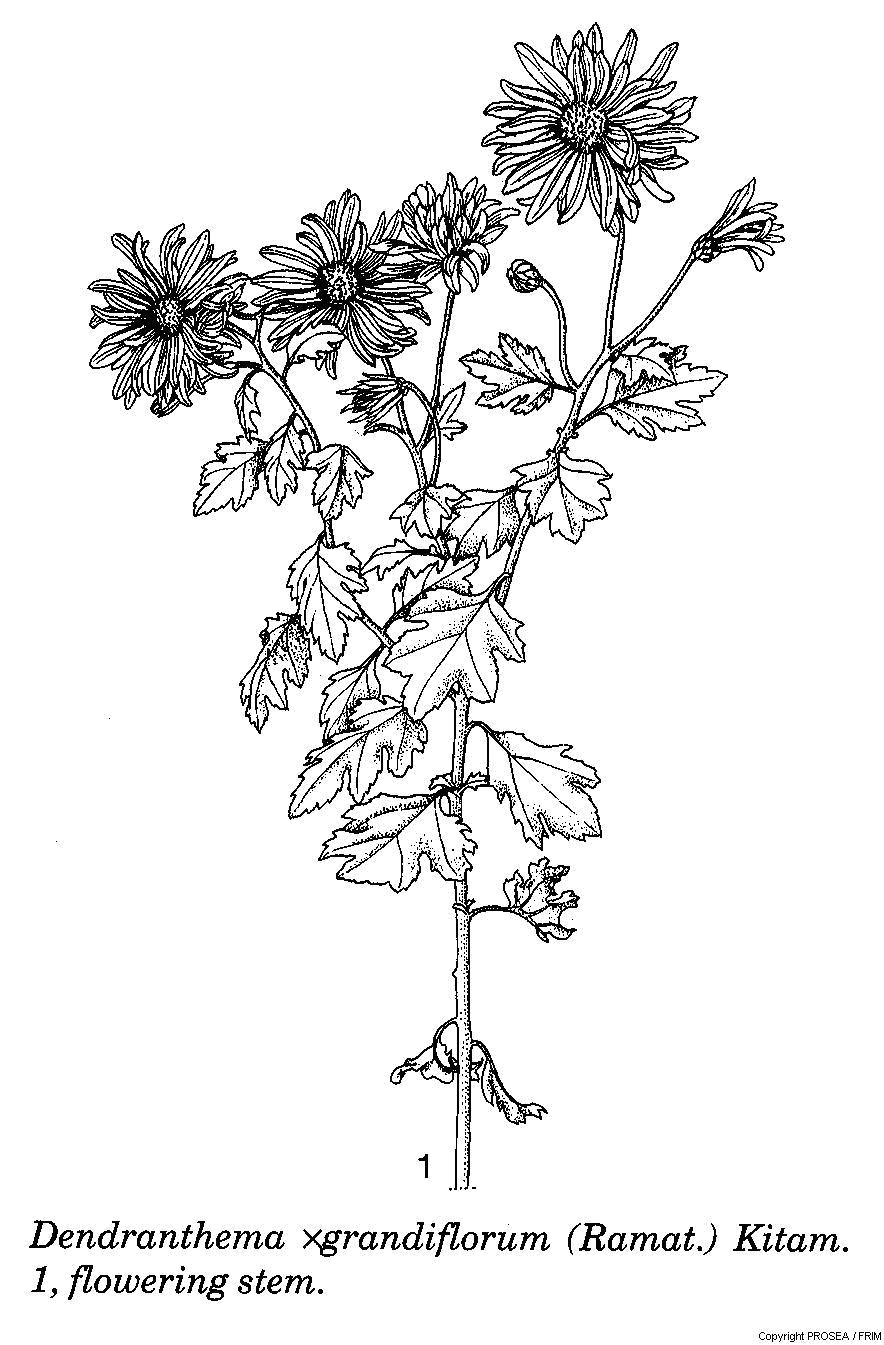Dendranthema x grandiflorum (Ramat.) Kitam.
Family
Compositae
Synonyms
Chrysanthemum morifolium Ramat., Chrysanthemum sinense Sabine, Dendranthema morifolium (Ramat.).
Vernacular Names
| English | Chrysanthemum, florist’s mum. |
| Thailand | Dok-khee-kai (Northern), benchamaat, benchamaat nuu (Central). |
| Philippines | Rosas de Japon (Tagalog), mansanilla (Iloko). |
| Vietnam | B[aj]ch c[us]c, c[us]c hoa tr[awr]ng. |
Geographical Distributions
Dendranthema x grandiflorum is cultivated in many countries as an ornamental, and 13 cultivar groups are recognised. It is very ancient cultivation, a native of China and Japan, and can be found in gardens, or naturalised throughout Southeast Asia.
Description
D. x grandiflorum is an aromatic biannual or perennial herb that can grow between 30-120 cm tall. The leaf form is egg-shaped, very variable in size with rounded teeth base often with 1-2 small and widely patent segments. The lower surface is densely white with grey-appressed-hairy while on the upper surface is almost smooth.
The hairy stalk of inflorescence is hardly thickened at the top. The ring of bracts surrounding several flowers is usually cup-shaped and often widely patent. The size measures between 6-9 mm long or longer, heads very variable measuring about 2-20 cm in diametre. The smooth petal is measures 11-35 mm long, white, yellow, pink, red, violet or brown. D. x grandiflorum is a hybrid of unknown parentage, grown in gardens, and flowering throughout the year. It resembles D. indicum, but is usually taller.
Ecology / Cultivation
D. x grandiflorum is planted in wide variety of regions, from sea-level to 1000 m altitude. It prefers sunny, fertile locations with loose and moist soil. The optimum temperature range is from 15ºC to 30ºC.
Line Drawing / Photograph
References
- Plant Resources of South-East Asia No.12(2): Medicinal and poisonous plants 2.


